#lufthansa 737
Explore tagged Tumblr posts
Text

airsLLide No. 19921: HB-IEE, Boeing 757-23A, Privatair, Geneva, February 11, 2001
This 1989-built Boeing 757 started her career as corporate and VIP aircraft when it was delivered to Geneva-based Petrolair, a provider of charter flights for the oil industry in the Middle East and sub-Sahara regions.
Petrolair was rebranded as Privatair when it expanded into offering scheduled üremium-class only flights on behalf of carriers such as Gulf Air, KLM, Lufthansa or Swiss International Air Lines, expanding its fleet with several Boeing 737 BBJ and Airbus A319 ACJ aircraft.
The sole Boeing 757 was retained in its classic role of corporate charters and private VIP flights until its transfer to JetMagic of Malta in 2013 where she continued to fly such services globally for another ten years, now carrying the tail number 9H-AVM. In 2025, she again found a new operator in the form of a private owner operating her through an US-based trust as N107TV.
8 notes
·
View notes
Text
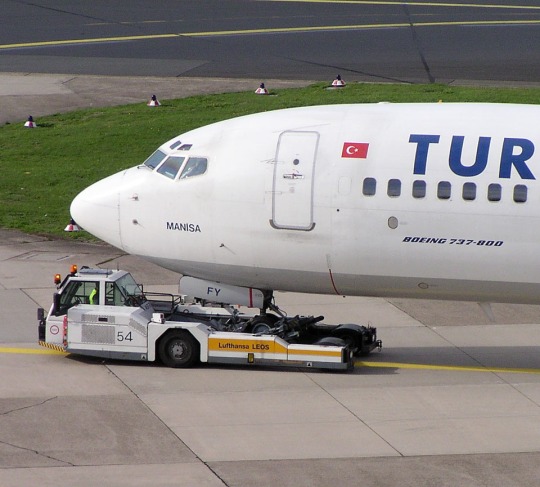
A Turkish Airlines Boeing 737-800 enjoys a gentle pushback from a Lufthansa LEOS Goldhofer AST-3 Towbarless Aircraft Tractor Düsseldorf Airport (DUS), Germany, 2006 image credit: Arcturus on Wikimedia Commons
13 notes
·
View notes
Text
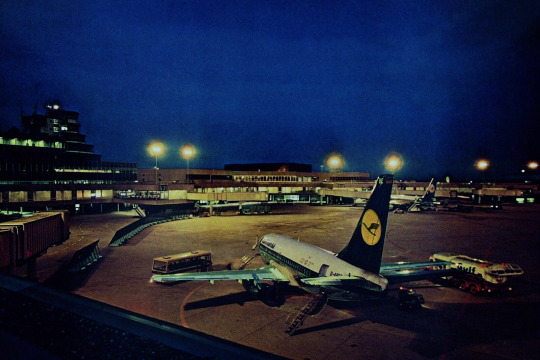
Lufthansa Boeing 737-200 at Frankfurt Postcard
@postcardtimemachine
#Lufthansa#b737#Frankfurt#aviation#airplanes#avgeek#planes#postcards#postcard#travel#planespotting#ftcco#aviación#aviacion#avión#avion#Luftfahrt#Flugzeuge
15 notes
·
View notes
Note
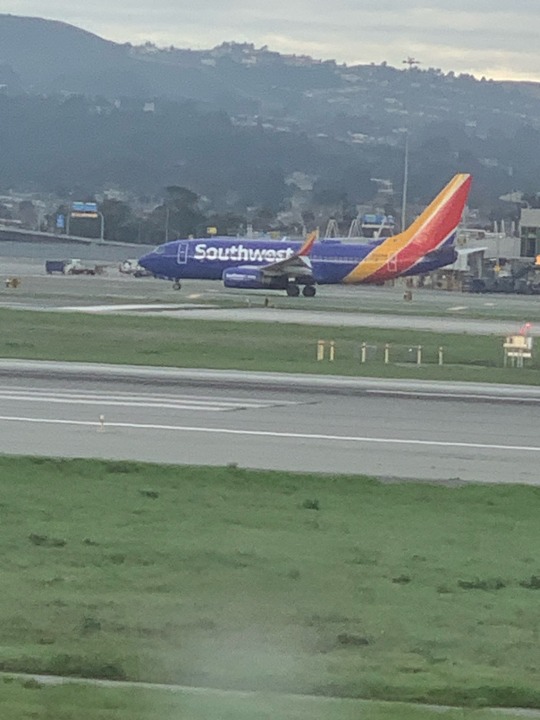
i thought southwest was all 737s?? why does she look so stubby???
Southwest is all 737s, yes! It's wild how quickly the 737's reputation has changed because they used to be The stubby plane.
There are four 'generations' of 737 - original (100/200), Classic (300/400/500), Next Generation (600/700/800/900), and MAX (8M/9M/7M and 10M when those enter service). The first 737 model from all the way back in the 60s, the -100, looked like This:
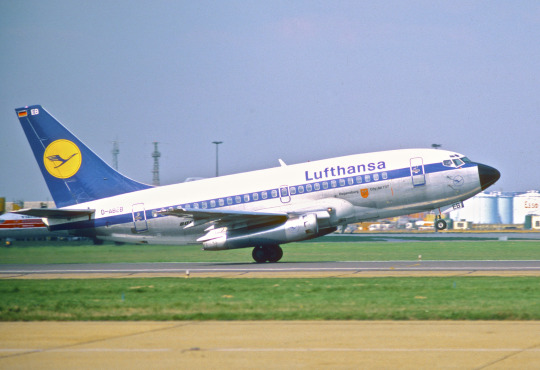
(They only made 30 of them and they were basically all Lufthansa's, but I think NASA might still have one)
Because, you see, the 737 was intended to be strictly a short-range jet carrying small amounts of passengers and because of that it was absolutely teeny. It was actually meant to compete with planes as small as the Fokker F28, and in modern terms I'd compare it to something like an A318 or E170 (except far more limited in range). Original 737s operated routes you'd probably use props for today. They were literally made to take over on routes too small and low-capacity for the 727.
(Check out those weird stretched out nacelles - those are JT8Ds, and they're most prominently also used on the DC-9 but you can also find them on some 727s, some Caravelles, and one of my favorite obscure failed airliners, the Dassault Mercure. Get a long, little engine, they said. You can tell original 737s apart from Classics because those ones have regular(ish) engines.)
Then for some reason Boeing just kept stretching her?


737-200 of United Airlines | 737-300 (Classic) of LOT Polish Airlines
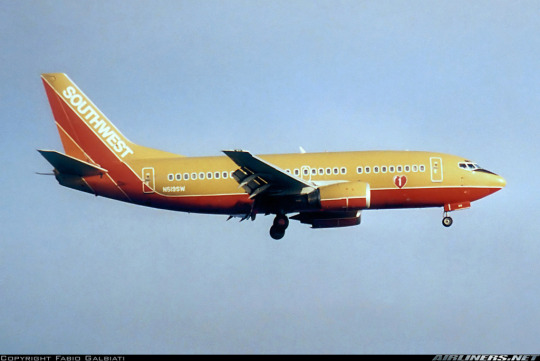
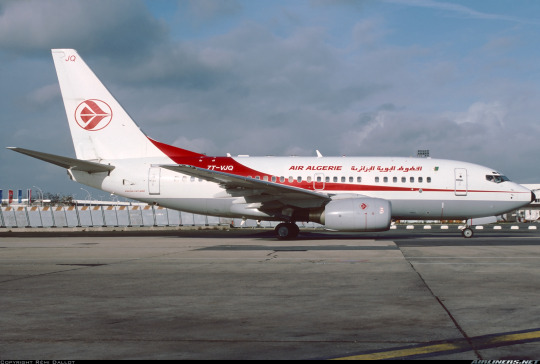
737-500 (Classic) of Southwest Airlines | 737-600 (Classic) of Air Algérie
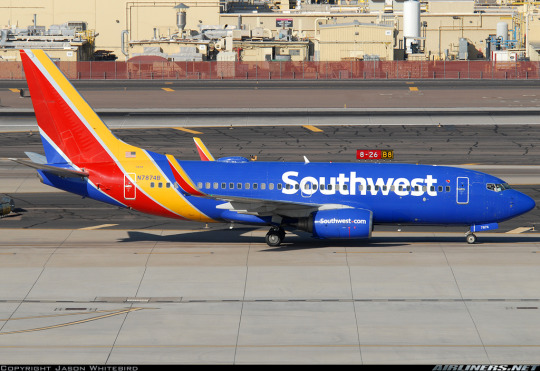
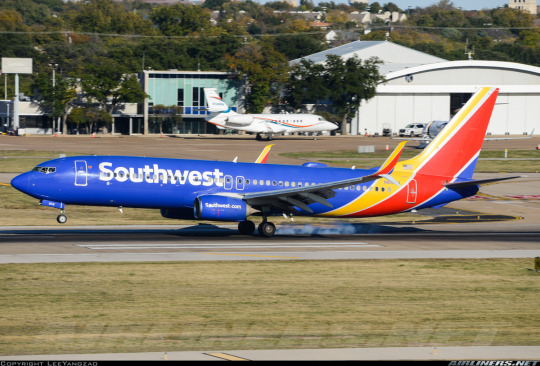
737-700 (NG) of Southwest Airlines | 737-800 (NG) of Southwest Airlines
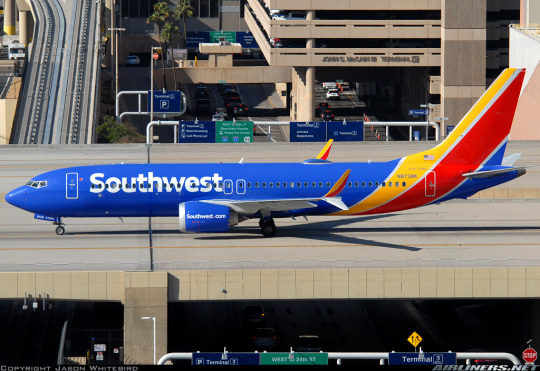
737 MAX 8 of Southwest Airlines
And now they're comparable to 757s, for some reason. I have a massive soft spot for the old stubby 737s. To me that's what a 737 is supposed to be. But the -800 was the most produced until the MAX 8, which I believe has similar numbers, so those are what people are most used to seeing if they grew up after the 727 era.
As for Southwest, they operated the 200, 300, and 500, and right now they operate the 700, 800, and MAX 8. They're planning to replace the 700s with MAX 7s, but those aren't getting built yet...so you got to see the 700, which, despite all the stretching, manages to hold onto some of the stubby glory the 800 and MAX lost. I think the Southwest livery looks extra good on her because of it 😊
27 notes
·
View notes
Text
Events 10.29 (after 1950)
1953 – BCPA Flight 304 DC-6 crashes near San Francisco. 1955 – The Soviet battleship Novorossiysk strikes a World War II mine in the harbor at Sevastopol. 1956 – Suez Crisis begins: Israeli forces invade the Sinai Peninsula and push Egyptian forces back toward the Suez Canal. 1957 – Israel's prime minister David Ben-Gurion and five of his ministers are injured when Moshe Dwek throws a grenade into the Knesset. 1960 – An airplane carrying the Cal Poly football team crashes on takeoff in Toledo, Ohio. 1964 – The United Republic of Tanganyika and Zanzibar is renamed to the United Republic of Tanzania. 1964 – Biggest jewel heist; involving the Star of India (gem) in the American Museum of Natural History in New York City by Murph the Surf and gang. 1967 – Montreal's World Fair, Expo 67, closes with over 50 million visitors. 1969 – The first-ever computer-to-computer link is established on ARPANET, the precursor to the Internet. 1972 – The three surviving perpetrators of the Munich massacre are released from prison in exchange for the hostages of the hijacked Lufthansa Flight 615. 1980 – Demonstration flight of a secretly modified C-130 for an Iran hostage crisis rescue attempt ends in a crash landing at Eglin Air Force Base's Duke Field, Florida, leading to the cancellation of Operation Credible Sport. 1985 – Major General Samuel K. Doe is announced as the winner of the first multi-party election in Liberia. 1986 – British Prime Minister Margaret Thatcher opens the last stretch of the M25 motorway. 1991 – The American Galileo spacecraft makes its closest approach to 951 Gaspra, becoming the first probe to visit an asteroid. 1994 – Francisco Martin Duran fires over two dozen shots at the White House; he is later convicted of trying to kill U.S. President Bill Clinton. 1998 – In South Africa, the Truth and Reconciliation Commission presents its report, which condemns both sides for committing atrocities. 1998 – Space Shuttle Discovery blasts off on STS-95 with 77-year-old John Glenn on board, making him the oldest person to go into space at that time. 1998 – ATSC HDTV broadcasting in the United States is inaugurated with the launch of the STS-95 space shuttle mission. 1998 – While en route from Adana to Ankara, a Turkish Airlines flight with a crew of six and 33 passengers is hijacked by a Kurdish militant who orders the pilot to fly to Switzerland. The plane instead lands in Ankara after the pilot tricked the hijacker into thinking that he is landing in the Bulgarian capital of Sofia to refuel. 1998 – Hurricane Mitch, the second deadliest Atlantic hurricane in history, makes landfall in Honduras. 1998 – The Gothenburg discothèque fire in Sweden kills 63 and injures 200. 1999 – A large cyclone devastates Odisha, India. 2002 – A fire destroys a luxurious department store in Ho Chi Minh City, where 1,500 people are shopping. More than 60 people die and over 100 are unaccounted for in the deadliest peacetime disaster in Vietnam. 2004 – The Arabic-language news network Al Jazeera broadcasts an excerpt from a 2004 Osama bin Laden video in which the terrorist leader first admits direct responsibility for the September 11, 2001 attacks and references the 2004 U.S. presidential election. 2005 – Bombings in Delhi, India kill more than 60. 2008 – Delta Air Lines merges with Northwest Airlines, creating the world's largest airline and reducing the number of US legacy carriers to five. 2008 – A pair of deadly earthquakes hits Baluchistan, Pakistan, killing 215. 2012 – Hurricane Sandy hits the east coast of the United States, killing 148 directly and 138 indirectly, while leaving nearly $70 billion in damages and causing major power outages. 2014 – A mud slide; the 2014 Badulla landslide, in south-central Sri Lanka, kills at least 16 people, and leaves hundreds of people missing. 2015 – China announces the end of its one-child policy after 35 years. 2018 – A Boeing 737 MAX plane crashes after taking off from Jakarta, Indonesia killing 189 people on board.
2 notes
·
View notes
Text
Air India buys 50 B737 max from Boeing which is built for Chinese airlines
Air India is rapidly expanding its international network as the airline looks to capitalize on India’s booming aviation market. Competing in a Global Market To meet rising demand, the Tata Group-owned carrier is aggressively acquiring more aircraft, ensuring it can compete with global giants like Emirates and Lufthansa. In a strategic move, Air India has secured 50 Boeing 737 Max jets…
0 notes
Text
0 notes
Text
Leap Engine Market Size, Share, Growth, Trends and Forecast 2024-2032
The LEAP Engine Market, which forms an integral part of today’s aircraft engine propulsion systems has been experiencing dynamic changes, thanks to the rising demand for airborne transport systems coupled with enhanced sustainability requirements and advanced technologies. It is considered one of the biggest markets that influence the changes in the aerospace industry and its move to utilize eco-friendly and fuel-efficient technologies. This global market has been identified by breakthrough manufacturing methods, great research activities, and joint ventures among the leading aerospace companies. According to the UnivDatos Market Insights analysis, as per their “Leap Engine Market” report, the global market was valued at USD 112.50 billion in 2023, growing at a CAGR of about 6.50% during the forecast period from 2024-2032.
Access sample report (including graphs, charts, and figures): https://univdatos.com/get-a-free-sample-form-php/?product_id=67646
Recent Developments in the LEAP Engine Sector:
Innovations that have characterized the current LEAP (Leading Edge Aviation Propulsion) engine market have arisen from technological enhancements in efficiency and sustainability as well as performance. These are some of the major events in this sector, most of which happened in the last couple of years.
· April 2024: CFM Internation advances leap engine health monitoring through machine learning to provide operators with more accurate insights than ever before. The system now being used for CFM LEAP-1A and LEAP-1B engines models data from multiple engine sensors at take-off, climb, and cruise via probabilistic diagnostic and prognostic machine learning tools. These tools then provide targeted alerts based on known engine operating signatures. The operational models being generated are the most accurate the company has seen to date and are resulting in earlier detection of potential issues.
· April 2024: CFM International has developed and delivered LEAP-1A engines outfitted with its new reverse bleed system (RBS) to Airbus. The LEAP-1A engine with a new RBS system, which mitigates carbon build-up on fuel nozzles, was certified by the FAA and EASA in 2023. As a result, the requirement for on-wing fuel nozzle replacement and associated maintenance burden will be dramatically reduced.
Sustainability and Green Technology Integration in the LEAP Engine Market
The competition in the LEAP engine market has been slowly shifting towards Green Technologies to offer a solution to increase compliance with strict environmental standards and to cater to the needs of airline operators. This is one of the trends triggered by the push for carbon neutrality which has largely influenced the market.
· December 2023: Airbus, Daher, and Safran collaboratively developed The EcoPulse demonstrator achieved its first flight with a hybrid-electric propulsion system powered by high-voltage batteries. The aircraft uses distributed propulsion pods, aiming to advance hybrid and electric aviation technologies.
· July 2022: Delta Air Lines has ordered CFM International LEAP-1B engines to power its new fleet of Boeing 737 10 aircraft announced earlier today. The order includes additional spare engines and an option to purchase up to 60 additional engines. These next-generation engines offer advantages in terms of fuel efficiency, reliability, and daily utilization that are central to our ongoing effort to streamline and elevate Delta’s fleet.
Trend: AI-Driven Predictive Maintenance
One of the major trends arising in the leap engine market is the rising demand for AI-driven predictive maintenance. In today's world, AI has become paramount for various industries including aerospace and defense, which improves engine performance, reduces downtime, and increases the life span of leap engines. For instance, in February 2024, Lufthansa Systems introduced its new cutting-edge AI-powered operations control assistant for the airline industry. NetLine/Ops ++ aiOCC is a web-based AI assistant that supports airline operations controllers in increasing the stability and efficiency of daily operations. The solution is already in use and jointly optimized with the first customers. Additionally, companies operating in the market are investing hefty amounts for the upgradation in predictive maintenance. For example, in 2024, GE is integrating AI into preventive maintenance for jet engines, aiming to cut unscheduled removals by one-third. Developed at GE’s Bengaluru center, the AI-based “Digital Twin” system uses image analytics to predict failures and prioritize maintenance. Therefore, AI-driven predictive maintenance is reshaping the leap engine market.
Click here to view the Report Description & TOC- https://univdatos.com/report/leap-engine-market/
Conclusion:
The global LEAP engine market is a progressing market that is driven by new technologies, sustainable technologies, and Artificial Intelligence integration. The sector’s current development and future trends are discussed as shifting to greener, more efficient, and smarter propulsion systems due to environmental goals and airline demands for better fuel efficiency and lower operational costs.
Contact Us:
UnivDatos Market Insights
Contact Number - +1 9782263411
Email - [email protected]
Website - www.univdatos.com
Linkedin- https://www.linkedin.com/company/univ-datos-market-insight/mycompany/
0 notes
Text
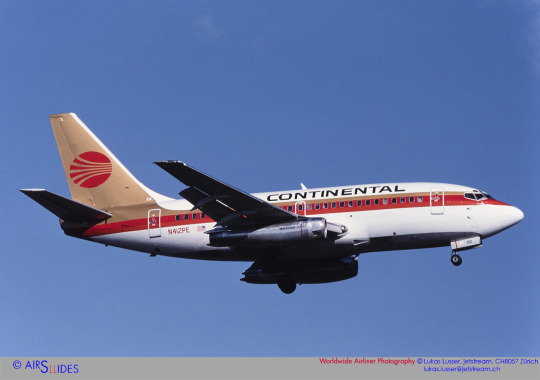
airsLLide No. 2751: N403PE, Boeing 737-130, Continental Airlines, Orlando, Februry 15, 1989
Through the merger with PeoplExpress, Continental also acquired the low-coster's fleet, including the 17 Boeing 737-100 PE used to start its operations with in 1981. The biggest customer for the smallest of all Boeing 737 versions had been Lufthansa that took delivery of 22 units between 1967 and 1969. At the beginning of the 1980s, they were replaced with Boeing 737-200 Adv., and PeoplExpress took the opportunity to buy an entire batch of these planes that were well maintained, but not easy to place on the market.
3 notes
·
View notes
Text
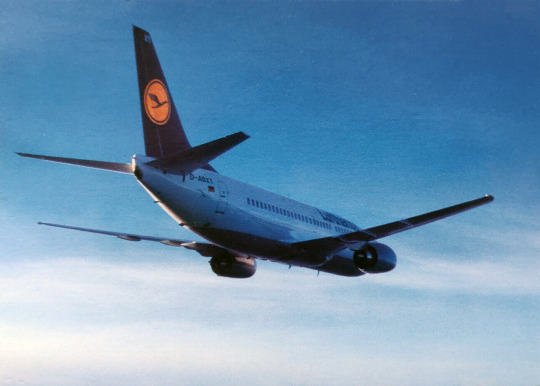
Lufthansa Boeing 737-300 Postcard
@postcardtimemachine
#Lufthansa#B737#aviation#airplanes#avgeek#planes#postcards#postcard#travel#planespotting#ftcco#aviación#aviacion#avión#avion#Luftfahrt#Flugzeuge
9 notes
·
View notes
Text
No. 48 - Eurowings
We're here today to talk about Eurow

Yes, Eurowings! Did you think those five letters started any other words? Silly. Let's discuss the aerosartorial choices of Eurowings, a member of - oh dear - the Lufthansa Group.
Eurowings! Eurowings is a former regional airline formed from the 1990 merger of Nürnberger Flugdienst, a regional airline that I'd heard of, and Reise- und Industrieflug, one I hadn't. After its acquisition by Lufthansa, it has been restructured into a low-cost subsidiary, making it something of the FlyDubai of Germany. That means I am yet again courting a C&D from the Lufthansa Group, and I am delighted to throw myself on this particular blade.
The process of Eurowings's evolution into its current state is somewhat tortuous, involving the cannibalization of its old subsidiary Germanwings (yes, this was subsidiary-ception, and while it happened after 2015 it seems to have been planned before...well, you know) and the establishment of an Austrian subsidiary which was moved to Malta last year and is named - get this - Eurowings Europe.
Eurowings has been going through it of late. Well, of ever, as far as I can tell. If you've ever been frustrated by a delay, spare a thought for the passengers of 2016's Eurowings flight 131, some of whom had their visas expire while stuck in their hotels in Cuba during their 60-hour delay. Every fourth flight could expect six hours or so of unscheduled quality time at the airport. Or, you know, 20 sometimes. 20 hours. Yikes! That's what happens when you start seven long-haul routes with one (1) A330 and a handful of various and sundry wet leases. A lot of their routes have been taken over by Lufthansa proper, which seems eager to kill the brand as soon as possible, and I can't blame them given it's somehow developed a worse reputation than actual Lufthansa. I've never flown with them. They served Boston for literally three entire months, but I wouldn't have flown Eurowings anyway. For my own taste their 'cheap' prices are still fairly expensive.

The Eurowings livery is unfortunately on more than just one plane for the moment. They have 95 A320 family members and four wet-leased Boeing 737s, giving them a very typical fleet for a low cost carrier. And they look like that!
Okay, first and foremost, I want to talk about their logo. It looks a lot like LATAM's logo.

Indeed, they even both use a variation on something adjacent to blue and something adjacent to pink. I think it's definitely a coincidence - they both were unveiled in 2015 - and even if it weren't I don't respect either one enough to defend its honor from the other.
So, those colors. I think I prefer the shades chosen by Eurowings, and in a competent livery design that palette could be extremely effective. I love LATAM's saturated pink and indigo, which made the mostly-white fuselage a disappointment, and I like Eurowings's desaturated fuchsia and cyan as a combination even more, but the lack of fuselage coverage gets even sadder when it's such light colors that fail to contrast against the white at all.

Unlike LATAM, Eurowings makes use of grey as both shading and background. I like this! I think it can make for a nice base to play with and a potential source of some interesting, dynamic designs.
Oh, and the logo is meant to look like an 'E'. I guess I can sort of see it, but it looks more like me attempting to get a pen that's starting hard going again. (Don't mix inks in pens, though. Especially not fountain pens.) Anyway, I don't really love the logo's shape in isolation but I do think it could easily lend itself to some totally acceptable fuselage layouts.
It's the wordmark that I think is interesting. This is about to be a long section about fonts but I promise that one, I have a point, and two, if you keep scrolling it will stop being about fonts.

The typeface used for the Eurowings wordmark is Soleto in medium weight. It was designed by Dalton Maag, a London-and São-Paulo based foundry. You've definitely seen their work around - they've done custom fonts for the likes of Pitney Bowes, Tesco, Fox Sports, Nokia, AT&T, Airbnb, Wix, USA Today, Google, and the flipping BBC, among others. And, well, a few that I would go as far as to say are pretty iconic:


Lush Handwritten is actually gorgeous in Cyrillic, by the way.
I would say they're not my favorite foundry, with a lot of their work trending towards somewhat boring sans-serifs that are not at all to my taste (you will never replace Gill Sans), but they've had some hits. They're also no stranger to airlines - they did a custom typeface for the TUI wordmark, which appears on their livery!

Blue side up appeal aside, I definitely want to someday talk about the strange beast which is TUI, the World's Most Misogynistic Airline.
So you might think that Dalton Maag was commissioned to make a nice custom font family for Eurowings, given Lufthansa literally used their money to commission a slightly different version of Helvetica, but you would be wrong. As their website makes no mention of a custom typeface for Eurowings, despite discussing modified versions of their existing products for other companies (like Fox Sports Cricket being a variant of Aller), I believe they are indeed using off-the-shelf Soleto, available via Dalton Maag's website as well as Adobe Fonts. Now, there is nothing inherently wrong with this, and I, who cannot afford a tablet to redesign the Eurowings livery, am not trying to wealth-shame an airline for not custom-ordering a typeface. They're far from alone. Another Dalton Maag user is Cebu Pacific, which uses Foco in a bold weight to decent effect, and I firmly believe that there's no reason to commission a second Helvetica if you want to use Helvetica. SAS uses Rotis Sans, and that's a massive airline with money to spare.

I just think the contrast here is funny. I could get the right to use the full Soleto font family for the entirety of Runway Runway's branding, title, and body text for one thousand sterling, or around $1350 in USD. This is, to me, a fortune and more money than I've had at any one time in literal years. It's also definitely not what Eurowings paid. I don't know what they paid, because Dalton Maag does custom quotes for unlimited licenses, but I don't want to imagine how much it cost to commission a firm to make a second Helvetica, so this just makes me think that Lufthansa really despises Eurowings. Pointless diversion? Maybe. I just think it's funny.
I think Soleto Medium is on the uglier side. I mean, I really don't like how Eurowings uses it in the same way I don't like Helvetica or the FedEx proprietary font - I really don't like really wide sans serifs used as titling, and I'm not sure why. Is it because it reminds me of elementary school? Is it because I find them sort of illegible? Are they just...ugly? Well, there's no such thing as objective ugliness, but this is my blog and I dislike them. They're certainly not at all memorable, which frequently makes their use something of an epic branding fail.
Soleto looks better than Helvetica, I'll give it that. A lot better. It's not really the typeface, though. It's the usage. While Dalton Maag's website does say:
Soleto is a flexible font family that can adapt itself to a wide variety of uses. [...] [it] is also quite capable of standing on its own.
It opens with:
Soleto is a contemporary sans serif font family with a quietly confident character. It works well for big areas of text, creating an even rhythm and texture, but can also make a statement at larger sizes.
And I think this is totally true, actually. As body text Soleto is fine! (This is via Dalton Maag's TypeTester feature, as are all future samples.)

This is 10pt Soleto medium, and it's a solid if generic sans-serif. Not overly ugly, totally legible. I'm not sure it's meant to be used for a logo, though. When I read 'statement at larger sizes' I think...titling, not airplane livery. A title for a website and an airplane wordmark are just different orders of magnitude.
How about titling? Well, I tried my own name in a couple different weights, and I actually think Soleto looks great in black italic.

This is a bit modern for my own taste, but I think this would look fine as a wordmark. Frankly, I think it would look good as an airline livery! It's not nearly as generic, it's almost a bit stylized even, and it's legible. The italic is always something I think looks nice due to its aerodynamic implications, and with a name as long as mine you don't really notice that this also does that obnoxious thing where the bottoms of certain letters dip beneath the baseline. Let's try some other weights!


Normally I prefer lighter weights in sans serifs, but no, Soleto looks worse the thinner it gets. These are, respectively, Light and Medium. Medium is what Eurowings uses!
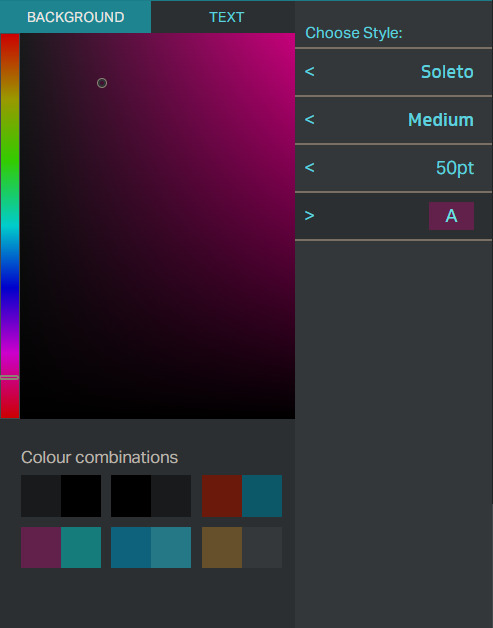
Oh, wow, would you look at that! One of their default color combinations is even basically the Eurowings scheme, though in reverse.

Well, this...doesn't look that bad, right? It's boring, but it doesn't actively make me wrinkle my nose.

So why is this such a problem? I mean, let's look at this picture of an airplane, as we do on this blog. I've chosen this picture because you can see a Finnair (post coming soon) plane in the background. Finnair has this neat spiky sci-fi looking wordmark, for which no typeface exists. This wordmark is absolutely huge, and in a very dark blue against white.
Meanwhile, Eurowings's logo is very similarly formatted to Lufthansa's. It's high up and closely spaced, making it feel a little claustrophobic. It's not...as bad as Lufthansa's proprietary Helvetica (Helvetica Neue Neue? Helvetica Ultra-Ultra-Condensed? Hellvetica?) but that's barely a compliment. Lufthansa has theirs well above the window-line all squished together, while Eurowings has the decency to use the windows as the underline you would think they're just perfect to be, but with a typeface that's medium weight, neither thick nor thin and with no italics or serifs, it becomes something of a small blob. To locate something that far up should be a stylistic choice. There should be no default choices in airline liveries. You can design a massive wordmark to cover the fuselage, or something which looks nice when localized to part of it, but you don't just get to do the equivalent of opening your text editor, typing in one word without indenting, and calling that a livery. Lufthansa doesn't get this, and neither, really, does any of the unfortunate airlines in the Lufthansa Group.
The color used doesn't blend into the white, but it also isn't like they're sharply contrasted. It just doesn't particularly draw your eye. It's a wordmark your eyes glide right over and it's not at all memorable. While grey or cyan could have been incorporated somehow to accentuate it, they weren't. For a livery that's mostly white to work, you generally need some sort of really vivid color. Kalitta Air's red and gold or Tibet Airlines' rainbow are examples of good use of a white fuselage. You could use a different background, but they stand on their own, and the white plays an active part in the color palette rather than just being a default canvas for it. Many airlines use black or dark blue for their wordmarks, and while these aren't the most creative choices they're used for a reason. Just look at Finnair. That's some contrast. It's nice and legible and distinct.
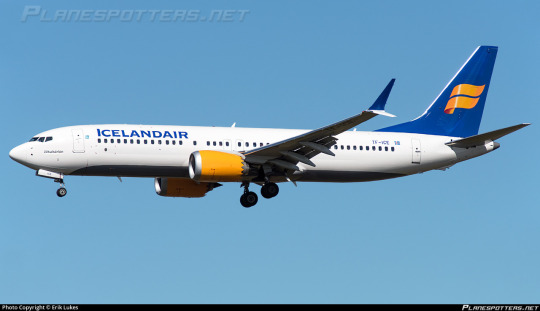

Icelandair's two most recent liveries use the same placement for their wordmark as Eurowings and Finnair respectively. Now, I actually like the wordmark on the old livery better. It has those nice trailing serifs and is in small caps, making it memorable and dynamic, and it doesn't feel closely spaced. The name 'Icelandair' teeters on the edge of being too long for this to work, but ultimately pulls it off. The modern livery dispenses with this much nicer font in favor of gigantic letters. While I like this less, it's still serviceable. It is gigantic, legible, and feels as natural as me sprawling out on a couch after work. It's simply expanded to its natural point. Adequately done on both archetypes.

Meanwhile, the lack of color contrast from the white fuselage was perhaps my main criticism of Air Astra's livery, which I otherwise quite like. It's probably the inverse of Eurowings, which is contrasted enough to be acceptable but entirely boring in design - well-designed, but please, please, please let me actually see it.

Eurowings just...well, I'm going to copy and paste exactly what I said earlier. There should be no default choices in airline liveries. You can design a massive wordmark to cover the fuselage, or something which looks nice when localized to part of it, but you don't just get to do the equivalent of opening your text editor, typing in one word without indenting, and calling that a livery.
And, as a final note, something that looks good on a webpage won't always look good on an airplane. The angles you'll see it from are completely different, it has to compete for the rest of the livery for your attention, and you can't necessarily put infinite space around it due to the very physically limited canvas you're working with. The Eurowings wordmark feels vertically cramped more than it does horizontally, because the windows are right below it and immediately above it the fuselage just...ends, from a two-dimensional view. Something looking okay in copy doesn't mean you can transfer it immediately to material.
Lindon Leader talked about this when discussing his design process for the FedEx logo in a very illuminating interview I cited heavily in my FedEx post. He looked at multiple pre-existing fonts but decided to create a custom one, and one of his reasons for this was:
[...] each had its potential limitations downstream in application to thousands of FedEx media, from waybills and embroidered courier caps to FedEx.com and massive signage for aircraft, buildings and vehicles.
Something can look acceptable or even sleek on a webpage, and that same wordmark can look downright horrible when applied to an airplane. I'll say this for FedEx - while I find their logo ugly it is absolutely good at what it needs to do. It looks no worse in any one medium or context than any other, and that's one of the reasons it's successful. It's not to my taste, but it's definitely well-designed, and I think one of the ways to improve the livery would actually be to somehow give it more real estate on the fuselage.

So the wordmark is, in my opinion, an abject failure. It's not even ugly but I mean that in the same way Wolfgang Pauli describes crackpot physics as not even wrong. Like, it's fine. It's nothing showstopping or even memorable enough to be picked out of an identity parade of default webfonts but I don't despise it. It's a common phenomenon and I'm picking on Eurowings because it's there and I know exactly what font was used and thus can mess around with it, not because it's the worst. Much like Lufthansa, it's an opportunistic victim. You know, the sort of post I'll end up hyperlinking to later, because even in its failure it's nothing exceptional.

I will say I enjoy the tiny outline of black on the letters. That's not on the wordmark proper, as rendered on their website m, but adding it was definitely the right move to help the magenta stand out from the white. Once you know about it you can notice how it makes the wordmark pop ever so slightly, turning an unmitigated catastrophe into a mitigated catastrophe. It's almost infuriating that they did this thoughtful little thing when you zoom out and remember what it's in service of. This honestly is a reoccurring thing with Eurowings.
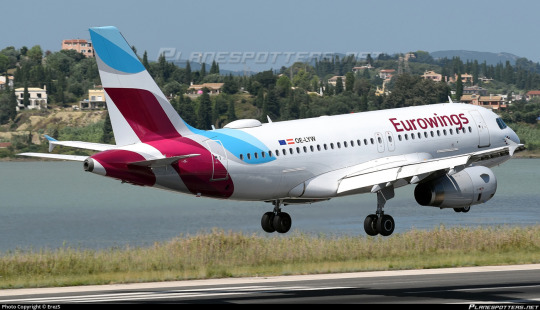
Look at that nice tail design! They could have slapped the logo on and left it at that, like so many other airlines, but they didn't. They use the same nice colors and the overlapping greys to create a design that is clearly their logo while also being abstract and dynamic. There's a lot of shapes, a lot of motion, and a lot of nice shades of cyan and magenta, and I love it!
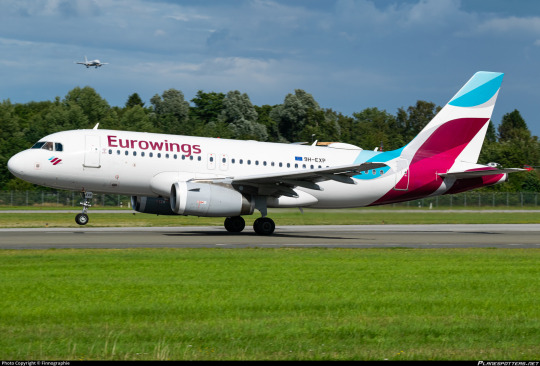
See that airplane landing in the background? Think about what airline you think it flies for, and stick a pin in that for a minute.
Hey, uh...where's the rest of it, though?
So, yes. Eurowings shares the first five letters of its name with Eurowhite. If you're not familiar with the term (I have a glossary, by the way) it just means a livery that is almost completely white save for logos. One could argue that the fact that the pattern on the tail isn't limited to strictly the tail and does form some sort of attempt at a fuselage design means that Eurowings' livery isn't 'true' Eurowhite, but I'm not going to brook that. Eurowhite is a state of mind. There is a nice, abstract design here which could easily be extended further. There is a grey shade which could be utilized (as it is on the engines, which look like they're lost and wandered onto another livery by accident) and there are infinite ideas to be had on the planet, and instead the majority of the plane is just white.
If one thing is thought of as my thesis from this post, let it be this, said for the third time: there is no such thing as default. Things like this wordmark placement, this type of font, and the primarily white fuselage are not default. The fact that they are common and boring does not make them inherent until replaced. They are still an active choice just as much as designing a livery that doesn't utilize these features is. It was proposed, iterated on, signed off on, and implemented. Airlines don't start with a template they then alter. They start with a vast world of infinite possibilities and decide they want to do the same thing as everyone else - that's a choice just how any other act of cowardice is a choice. I think the misconception that boring design is a result of inertia and lack of effort is a harmful one. It is a choice. They choose to do this.
They do not choose it because it is right for their livery, because they like it. They choose it because it is common, it is safe. It is reliable and it doesn't rock the boat. I've said this before discussing Southwest and Flair - low-cost carriers should be willing to rock the boat. If you're going to advertise yourself as the no-frills option you shouldn't try to look all composed and corporate. You have nothing to lose with being bright and pretty and interesting, so why aren't you?
And that cowardice is what makes me hate it so much. Some liveries are ugly, and some are almost ugly but stop halfway to cower in a Eurowhite bunker in an attempt to stem the bleeding, but there's nothing more tragic than a livery so afraid of being ugly that it cuts off and cauterizes something beautiful. The fear of ugliness is the death of beauty. condor is worth one billion Eurowings.
(No, Eurowings does not fail the Star Alliance Test, though.)
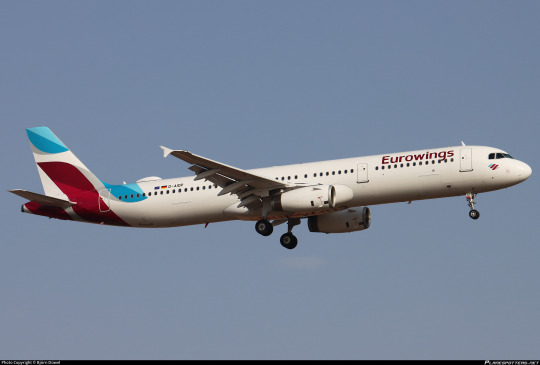
Like many of these designs that sort of just decide to stop after the tail, the longer a plane is the worse the Eurowings livery is on it. This is a very nice tail attached to a big white tube. Sure, Eurowings mostly operates somewhat short aircraft, but that wasn't the case when the livery was designed - back then they had A330s. Even now they have A321s.
Frustratingly, given how much I've ragged on this livery, I do still really like the tail. Even more frustratingly, you can see how easy it would have been to not have it be this way. The end of the cyan stripe almost begs to be held onto, weaved onto the rest of the fuselage, but it just isn't. It looks unfinished. It looks sad.


With all these shades of cyan and magenta to play with, the light heavily alters the way the colors on the tail look. They're never not pretty. It's a lovely colorscheme that's dramatically underutilized. The way it weaves together has so much potential, and it's attached to a white body. It looks like the paint job is unfinished. And that's what I hate the most about Eurowhite - good ideas left to languish, where a bit of custom letterhead does a better job of expressing your identity than an airplane livery.

The one feature Eurowings has towards the front of the plane is this little cheek decal of the Eurowings logo. Nice thought, but it almost looks actively worse when it stands out like that among an otherwise blank space. Plus, it's so small it might as well be a dot. It's cute, but in terms of overall effect on the livery it has the effect of making something mostly white look cluttered, which is just downright bizarre.

Obviously I can't endorse this. While not quite at the Lufthansa Line, with the actual bit of design happening on the tail instead of a sterile block, it doesn't cover much more fuselage than a proper exemplar of the phenomenon, and that's just always going to be a bit of a kneecap. Eurowhite is a state of mind, so much so that I almost think an unremarkable sans-serif font is as much of a codifying feature as a white body despite not being specified anywhere in the term. The same decision-making process leads both places, and the little black outline and cheek stamp and nice tail design just cant overpower that.
I'm giving Eurowings a D+.
Eurowings reminds me most of Saudia. They both have gorgeous colorschemes wasted on a design which burrows itself down as far into the substrate of artistic cowardice as physically possible. It's especially tragic and leaves me fighting myself over my final ratings. It feels wrong to grade such a gorgeous tail so harshly, but the good design features just make the bad package even more insulting. And at the end of the day I just have to put my foot down.
Sometimes I'm generous with grading because an airline is new, or because they're iterating on something that could be taken in a good direction. Eurowings isn't in the process of developing towards something nice, it's just Eurowings. It's an airline that stranded people in Cuba for 60 hours and Lufthansa seems to want it dead. I don't think we'll be getting a Eurowings livery overhaul anytime soon and I'm pessimistic about its longevity in general. Low-cost carriers and subsidiaries of large airlines are both easy come, easy go. Tears in the rain. 'Twas ever thus. Try not to get too attached.
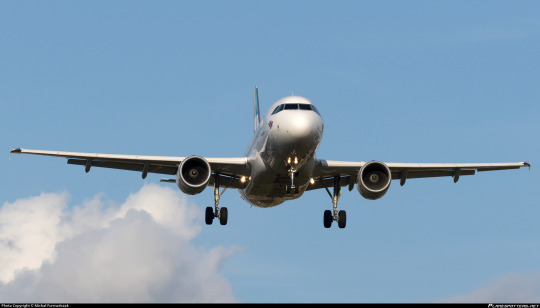
Remember that plane from earlier? Yeah, I've got no clue what airline it flies for, but I don't think I can rule out it being Eurowings. 'Twas ever thus.
#tarmac fashion week#grade: d+#era: 2010s#era: 2020s#region: west/central europe#region: germany#eurowings#low-cost carriers#lufthansa group#air astra#icelandair#lufthansa#tui#finnair
15 notes
·
View notes
Text
Events 1.6 (after 1930)
1930 – Clessie Cummins arrives at the National Automobile Show in New York City, having driven a car powered by one of his diesel engines from Indianapolis. 1941 – United States President Franklin D. Roosevelt delivers his Four Freedoms speech in the State of the Union address. 1946 – The first general election ever in Vietnam is held. 1947 – Pan American Airlines becomes the first commercial airline to offer a round-the-world ticket. 1950 – The United Kingdom recognizes the People's Republic of China. The Republic of China severs diplomatic relations with the UK in response. 1951 – Korean War: Beginning of the Ganghwa massacre, in the course of which an estimated 200–1,300 South Korean communist sympathizers are slaughtered. 1960 – National Airlines Flight 2511 is destroyed in mid-air by a bomb, while en route from New York City to Miami. 1960 – The Associations Law comes into force in Iraq, allowing registration of political parties. 1967 – Vietnam War: United States Marine Corps and ARVN troops launch "Operation Deckhouse Five" in the Mekong River delta. 1968 – Aeroflot Flight 1668 crashes near Olyokminsk, killing 45. 1969 – Allegheny Airlines Flight 737 crashes in Lafayette Township, McKean County, Pennsylvania, United States, killing 11. 1974 – In response to the 1973 oil crisis, daylight saving time commences nearly four months early in the United States. 1974 – Aeroflot Flight H-75 crashes near Mukachevo, killing 24. 1989 – Satwant Singh and Kehar Singh are sentenced to death for conspiracy in the assassination of Prime Minister Indira Gandhi; the two men are executed the same day. 1992 – President of Georgia Zviad Gamsakhurdia flees the country as a result of the military coup. 1993 – Indian Border Security Force units kill 55 Kashmiri civilians in Sopore, Jammu and Kashmir, in revenge after militants ambushed a BSF patrol. 1993 – Four people are killed when Lufthansa CityLine Flight 5634 crashes on approach to Charles de Gaulle Airport in Roissy-en-France, France. 1994 – U.S. figure skater Nancy Kerrigan is attacked and injured by an assailant hired by her rival Tonya Harding's ex-husband during the U.S. Figure Skating Championships. 1995 – A chemical fire in an apartment complex in Manila, Philippines, leads to the discovery of plans for Project Bojinka, a mass-terrorist attack. 2000 – The last natural Pyrenean ibex, Celia, is killed by a falling tree, thus making the species extinct. 2005 – Edgar Ray Killen is indicted for the 1964 murders of Chaney, Goodman, and Schwerner during the American Civil Rights Movement. 2005 – A train collision in Graniteville, South Carolina, United States, releases about 60 tons of chlorine gas. 2012 – Twenty-six people are killed and 63 wounded when a suicide bomber blows himself up at a police station in Damascus. 2017 – Five people are killed and six others injured in a mass shooting at Fort Lauderdale–Hollywood International Airport in Broward County, Florida. 2019 – Forty people are killed in a gold mine collapse in Badakhshan province, in northern Afghanistan. 2019 – Muhammad V of Kelantan resigns as the Yang di-Pertuan Agong of Malaysia, becoming the first monarch to do so. 2021 – Supporters of U.S. President Donald Trump attack the United States Capitol to disrupt certification of the 2020 presidential election, resulting in five deaths and evacuation of the U.S. Congress.
0 notes
Text
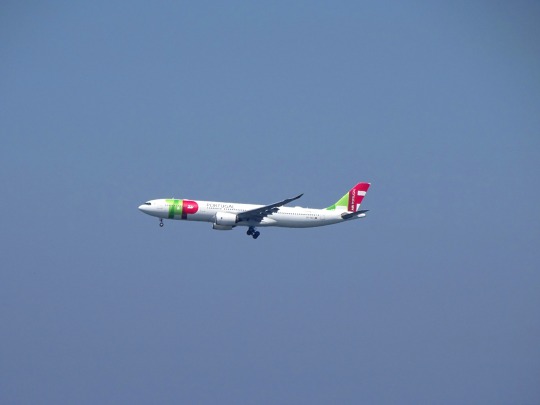

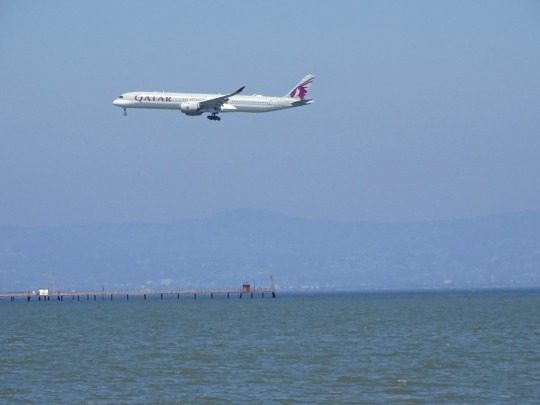
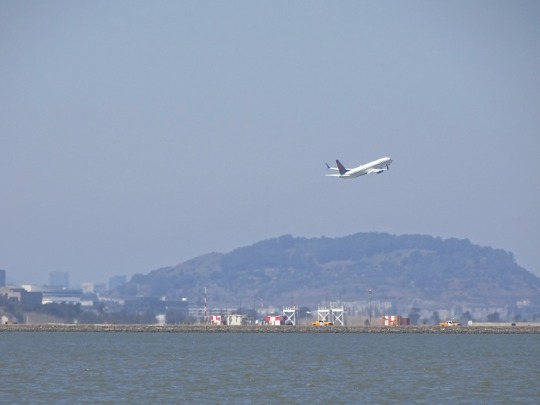
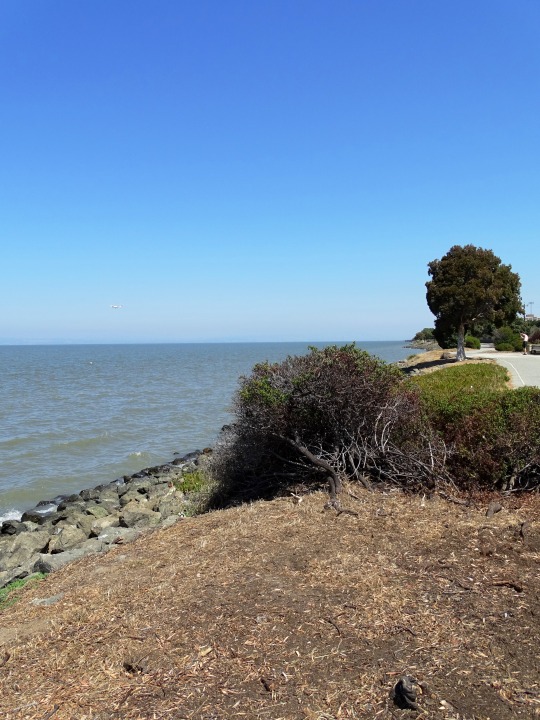
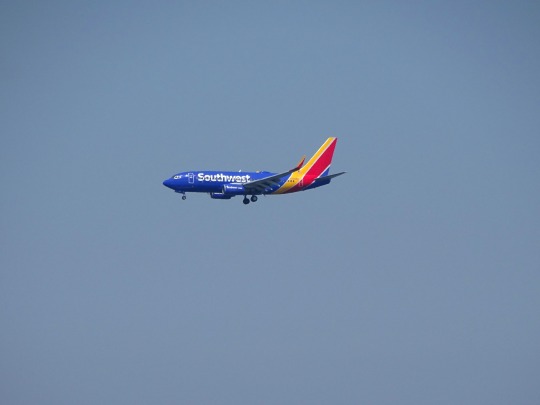
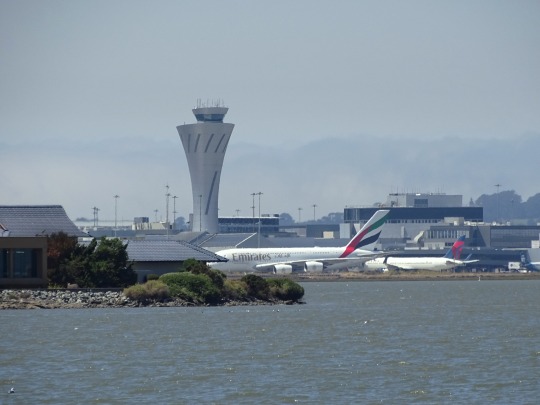
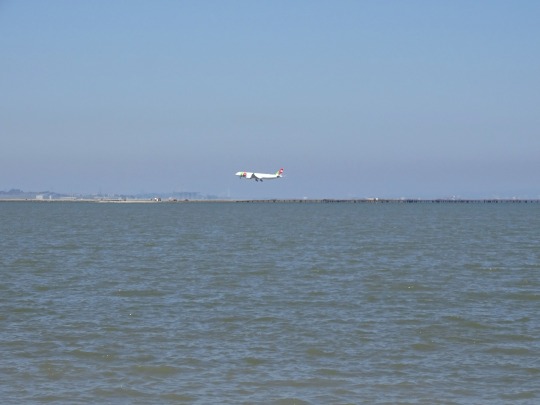
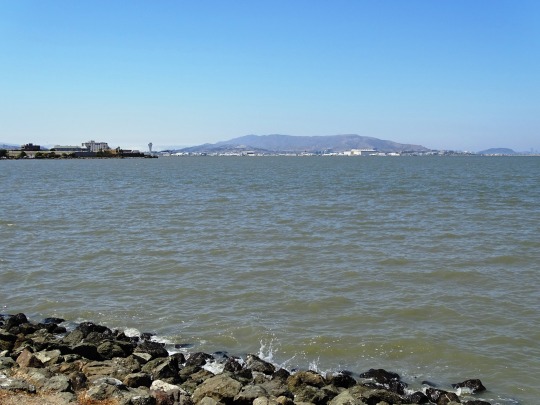
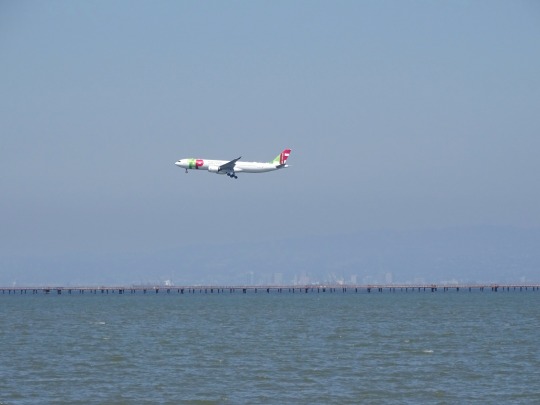
Millbrae, CA (No. 3)
During World War II, the airport was used as a Coast Guard base and Army Air Corps training and staging base. The base was called Naval Auxiliary Air Facility Mills Field and Coast Guard Air Station, San Francisco. Pan American World Airways (Pan Am), which had operated international flying boat service from Treasure Island, had to move its Pacific and Alaska seaplane operations to SFO in 1944 after Treasure Island was expropriated for use as a military base. Pan Am began service from SFO after World War II with five weekly flights to Honolulu, one of which continued to Canton Island, Fiji, New Caledonia, and Auckland.
The first service by foreign carriers was on Australian National Airways (ANA) Douglas DC-4s flown by British Commonwealth Pacific Airlines: Sydney–Auckland–Fiji–Kanton Island–Honolulu–San Francisco–Vancouver, BC. The first flight left Australia on September 15, 1946. In 1947 Pan American World Airways began its "round the world" flights from SFO to Guam, Japan, the Philippines, China and other countries; Pan Am also flew to Sydney from SFO. The year 1947 saw the start of United Airlines Douglas DC-6 flights to Hawaii and Philippine Airlines flights to Manila.
TWA began flying Lockheed Constellations (L-1649A's) nonstop to London Heathrow and Paris Orly in 1957. In 1954 Qantas took over the ANA/BCPA route from SFO to Sydney; starting in 1959 their Boeing 707s flew to Sydney via Honolulu and Nadi, Fiji, and in the other direction to New York and London. Pan Am scheduled Boeing 707-320s from Tokyo nonstop to SFO (winter only at first) starting in 1960–61; the westbound nonstops had to await the longer range Boeing 707-320B. British Overseas Airways Corporation (BOAC, a predecessor of British Airways) arrived in 1957; in 1960 its Bristol Britannias flew London–New York City–San Francisco–Honolulu–Wake Island–Tokyo–Hong Kong as part of BOAC's around-the-world service. By 1961 BOAC had replaced the Britannias with Boeing 707s that did not require the fuel stop at the Wake Island Airfield. Japan Airlines (JAL) arrived at SFO in 1954; in 1961 it was flying Douglas DC-8s San Francisco–Honolulu–Tokyo. In 1961 Lufthansa had begun serving SFO with Boeing 707s flying San Francisco–Montreal Dorval Airport–Paris Orly Airport–Frankfurt three days a week. Lufthansa operated Boeing 720Bs on this routing in 1963 along with Boeing 707s to Frankfurt via Montreal and London Heathrow Airport. Pan Am/Panagra service from SFO to South America was taken over in the late 1960s by Braniff International, which operated Douglas DC-8-62s to SFO after Braniff's acquisition of Panagra. In 1970 CP Air (formerly Canadian Pacific Air Lines) Boeing 737-200s flew nonstop to Vancouver, BC, and on to Winnipeg, Toronto, Ottawa and Montreal.
Source: Wikipedia
#Bayfront Park#Millbrae#Bay Trail#San Mateo County#travel#original photography#vacation#tourist attraction#landmark#cityscape#landscape#Bay Area#summer 2022#USA#California#San Francisco International Airport#SFO#Pacific Ocean#take-off#landing#planes#skyline#architecture#technology#engineering#San Francisco
0 notes
Text
Luftansa Technik addestra i tecnici della Marina Tedesca al supporto del P-8A Poseidon La società Lufthansa Technik ha comunicato di aver in corso l’addestramento dei tecnici della Marina Tedesca per il supporto del P-8A Poseidon, l’aereo da pattugliamento marittimo, di prossimo dispiegamento operativo. L’addestramento impartito include corsi teorici, pratici e sul posto di lavoro presso diverse filiali della Lufthansa Technik, come Lufthansa Technical Training (LTT) e Lufthansa Technik Budapest. La società Lufthansa Technik ha accumulato una vasta esperienza nella manutenzione di aerei di linea Boeing 737 civili da cui il P-8A è strettamente derivato, competenza che ora è applicata anche alla manutenzione del Poseidon. L’azienda è parte del team industriale tedesco che supporta
#Forze_Armate#Forze_Navali#Industria_della_Difesa#Lufthansa_Technik#Boeing#germania#marina_tedesca#Marineflieger#P_8A_Poseidon#stati_uniti
0 notes
Photo
I'mma try to identify these:
On the runway is a British Airways A320neo, holding short is a Swiss A320neo followed by idk what airlines A320ceo followed by a British 777-200 followed by another A320 followed by another BA 777-200, followed by what looks to be a Ba 777-300 and then more A320s and 777s
On the left at the terminal, the resolution is too low to be sure of anything though it is mostly 737-800s/maxs and A320s with a United in the extreme left
There's a Virgin Atlantic A350-900 and a bit further down there looks to be a Lufthansa maybe 747-8 or 747-400
@identifying-planes-in-posts can you help?
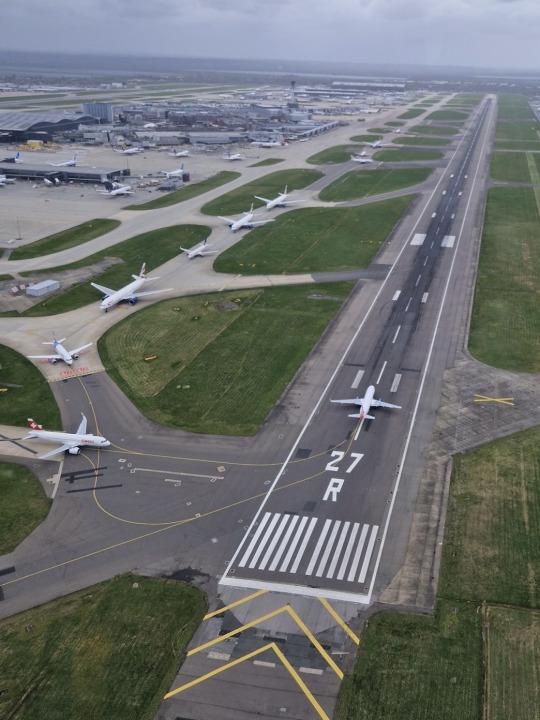
217 notes
·
View notes
Link
0 notes